
On the sunny morning of November 26, 2024, cheers echoed across the shores of Abaco as a small group of scientists, volunteers, and local bonefishing guides celebrated a milestone in marine restoration. The Perry Institute for Marine Science (PIMS) had just planted its 100,000th mangrove of the year in the Marls of Abaco, a vast expanse of prime bonefish habitat. Now surpassing their goal with over 157,000 mangroves planted across The Bahamas—and with a month still remaining in the year—the initiative marks the most extensive mangrove restoration effort by a non-profit in Bahamian history.
A Landscape Scarred but Not Defeated
Five years prior, Hurricane Dorian unleashed its Category 5 fury on the islands of Abaco and Grand Bahama. The storm didn’t just decimate communities; it obliterated a significant portion of the region’s mangrove forests—the lifeblood of the archipelago’s coastal ecosystem. Committed to addressing this devastation, PIMS launched extensive research and action plans to guide restoration efforts across The Bahamas. According to PIMS’s Mangrove Report Card for The Bahamas—the first of its kind released for the country last year—approximately 40% of mangrove habitats were damaged or destroyed. Mangroves, with their intricate root systems, not only provide a habitat for a myriad of marine species but also act as natural barriers against storm surges and erosion.
“The destruction was unimaginable,” recalls Denise Mizell, PIMS’ Abaco Program Manager, whose rich background—honed through teaching marine science in Haiti, guiding ocean research in Panama, and later leading coastal expeditions in Florida—informs her multi-faceted approach to ecosystem restoration in The Bahamas. “Entire mangrove habitats were wiped out overnight. We knew we had to act fast—not just for the environment, but for our whole community.”
“I experienced Hurricane Dorian first-hand in 2019… at the age of thirteen, to see everything stripped away was shocking,” said Journey Higgs, a PIMS volunteer and alumna of the Bahamas Environmental Steward Scholars (BESS) program. “I have been fortunate to be a part of the restoration efforts of the Perry Institute for Marine Science through the collection and dispersal of mangrove propagules. Not only have I observed the process of collection and the immense amount of propagules dispersed, as we have reached our 100,000th, but I have seen, over time, the effort and dedication of so many people that have come together and share a desire to restore our ecosystems that we depend upon for our future.”
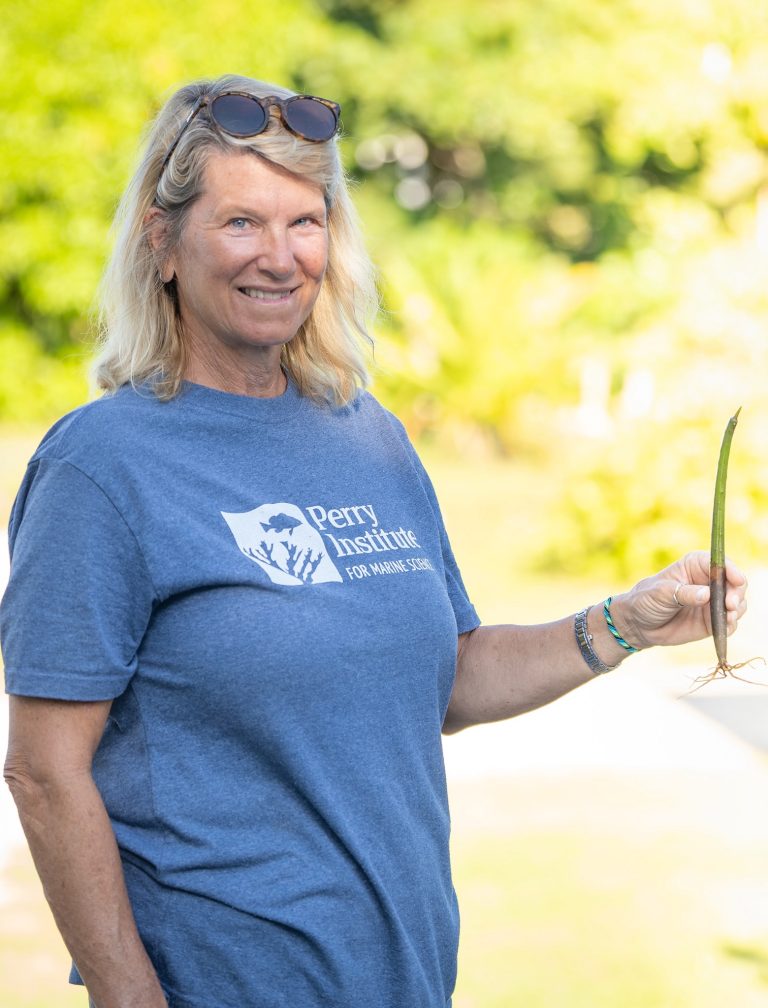
PIMS Leads the Herculean Task of Restoration
The journey to 100,000 mangroves was nothing short of monumental. Teams traversed the islands of Andros, Eleuthera, and New Providence, collecting tens of thousands of mangrove propagules—the lifeblood of future forests. Local bonefishing guides, whose livelihoods depend on healthy mangroves, played an instrumental role.
“Guides like Danny Sawyer and Justin Sands were a huge help,” said Mizell. “They know these waters like the back of their hand, so they showed us the best spots to plant, thinking about things like how the tides move and what the seabed’s like.”
Coordinating the collection of propagules in New Providence and managing deliveries from all islands to Abaco was Danielle Cartwright, PIMS’ Education Coordinator. “Getting every single seed pod to where it needed to be was a real challenge,” she explains. “But seeing those propagules planted into the mud and knowing the difference they’ll make—it made every early morning worth it.”
Volunteers braved sweltering heat and challenging terrain, often wading through knee-deep mud and tidal zones, to plant the seedlings. The collective effort not only met but exceeded expectations, igniting a movement that extends beyond mere numbers.

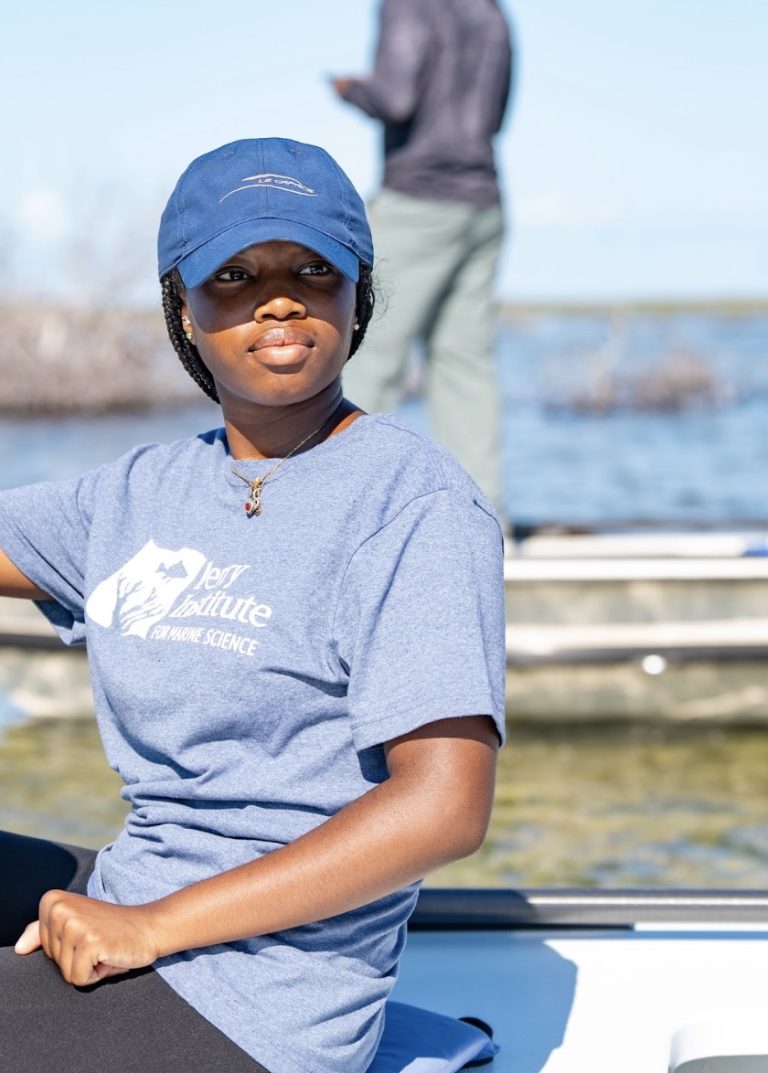
Mangroves: The Lifeline of Bonefish and Bahamian Fisheries
This ambitious project is more than a numbers game. It reflects PIMS’ broader mission to innovate solutions for restoring ocean health and inspiring action across The Bahamas. The newly planted mangroves are already showing signs of life, attracting fish, crustaceans, and bird species back to the area.
Mangroves are more than just trees; they’re keystones of coastal ecosystems. Research published in Global Change Biology highlights that mangroves sequester carbon up to four times more efficiently than terrestrial forests, making them critical allies in combating climate change. They also reduce wave energy by up to 66%, providing a natural defense against storm surges.
“Mangroves are basically the nurseries of the ocean,” says Mizell. “By restoring them, we’re hoping all sorts of sea life will return. It’s not just about planting trees; it’s about reviving the whole ecosystem and restoring a way of life and livelihoods.” The restoration of mangroves does more than heal ecosystems—it revitalizes the local economy by rejuvenating fisheries and boosting ecotourism, particularly bonefishing, a significant industry in The Bahamas.
“That’s where all the juvenile bonefish, snapper, barracuda, sharks live after their eggs hatch,” said Danny Sawyer, a local Abaco bonefishing guide. “Years ago, we’d go over the Marls, and bonefish would spawn there—lay their eggs up in the shallows for protection. Mangroves help during hurricanes too; they protect the land and sea. They take CO₂ out of the atmosphere. And they help our livelihood—if you’ve got good mangroves, you’ve got good fish. That means more business and more clients coming for excellent fishing opportunities.”
Kai Survance, one of the younger Abaconian bonefishing guides, added: “For me, healthy mangrove ecosystems means a healthy all-around fishery. They are the starting point for most of the marine life in The Bahamas. Without them, a majority of fish and other sea life wouldn’t have a nursery to grow up in. And for the mature creatures, it keeps them happy because they have places to find food and shelter. Without the mangroves, we wouldn’t have anywhere near the fishery we have today.”
PIMS mangrove specialist Thejon Levarity, daughter of PIMS volunteer and Captain Willis Levarity at Baker’s Bay, shares this passion. “Planting 100,000 mangrove propagules was so important to me. It gave me a sense of personal achievement and a burning desire to keep contributing positively in marine science.” Her father’s local knowledge has been crucial in helping PIMS disperse mangroves around the Marls.

PIMS Strengthens Community Roots
At the heart of this restoration effort is a powerful collaboration between scientists and the community. As part of PIMS’ community conservation and education initiatives, local schools have integrated mangrove ecology into their lessons, and community groups have organized planting events.
“Honestly, the best part has been watching everyone come together,” Mizell reflects. “It really shows that conservation isn’t just about science—it’s about people.”
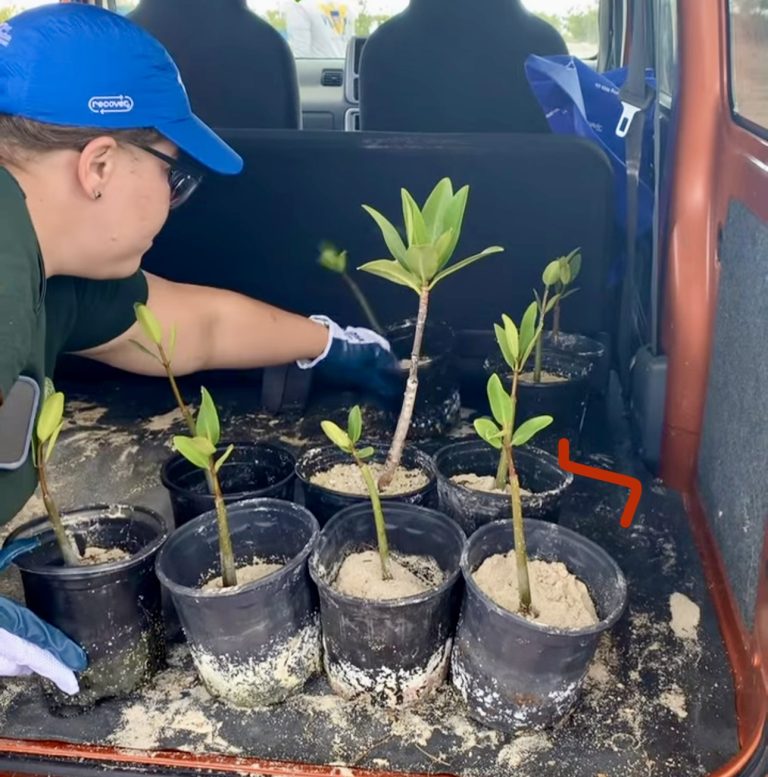
Looking Ahead: A Million Mangroves
Buoyed by this achievement, PIMS and its partners in The Bahamas Mangrove Alliance (BMA) have set their sights higher: planting one million mangroves across the archipelago.
The Bahamas Mangrove Alliance (BMA) is a pioneering coalition co-founded by PIMS, Bonefish and Tarpon Trust, and Waterkeepers Bahamas. It’s dedicated to the restoration and preservation of mangrove ecosystems throughout the islands. By pooling resources and expertise, BMA implements large-scale planting initiatives, educational programs, and research projects to safeguard these vital habitats for future generations.
“It’s about science and community coming together,” says Mizell with a determined smile. “Climate change and losing habitats are huge challenges, but we can make a big difference. Every mangrove we plant gets us one step closer to a stronger future for The Bahamas.”
Mizell, PIMS’ Abaco Program Manager whose office is set up at Friends of the Environment (FOE) in Abaco—a fellow Bahamas Mangrove Alliance (BMA) partner—is grateful for their support as well as The Bahamas National Trust’s unwavering commitment to the cause.
“They’ve been amazing at getting local volunteers involved, sharing resources, and bringing the community together,” Mizell explains. “Partnerships like this are what make big restoration projects possible.”
“Friends of the Environment is absolutely thrilled to celebrate this incredible milestone in mangrove restoration with our partners! Healthy mangrove habitats benefit every Bahamian, and we’re so proud to be part of the amazing partnership of organizations and communities making this happen,” added Olivia Patterson-Maura, Executive Director of FOE.
“The Perry Institute’s dedication to mangrove restoration and research has been truly inspiring, and we can’t thank them enough for all their hard work.”
A Beacon of Hope
As the sun sets over the Marls, casting long shadows of the young mangroves, there’s a palpable sense of hope. The once-devastated landscape is stirring back to life, and with it, the promise of a sustainable future.
In a world grappling with environmental crises, this achievement exemplifies PIMS’ mission: to protect and restore ocean life for the benefit of people and the planet. For Mizell, “It’s about restoring balance—not just in nature, but in our relationship with it.”


To support the ongoing efforts to plant one million mangroves across The Bahamas, visit our donate page. Every contribution brings us closer to a greener, more resilient future.
Frequently Asked Questions About Planting Mangroves in Abaco
1. What is the Marls of Abaco, and why is it important?
The Marls of Abaco is a vast wetland area in The Bahamas, critical for its role as a prime habitat for bonefish and other marine species. It also serves as a natural defense against storms and supports local fisheries and tourism.
2. How do mangroves contribute to environmental protection?
Mangroves act as natural carbon sinks, sequestering up to four times more carbon than terrestrial forests. They reduce wave energy, protect against erosion, and provide a nursery for marine life, supporting biodiversity and coastal resilience.
3. What is PIMS’ role in mangrove restoration?
The Perry Institute for Marine Science (PIMS) leads large-scale restoration projects and in 2024, planted over 150,000 mangroves. They are co-founding members of The Bahamas Mangrove Alliance, and collaborate with local communities and organizations to restore damaged ecosystems across The Bahamas.
4. How did Hurricane Dorian impact mangroves in The Bahamas?
Hurricane Dorian, a Category 5 storm, devastated 40% of the mangrove habitats in Abaco and Grand Bahama. These losses severely affected marine biodiversity, coastal protection, and local livelihoods.
5. How can I support the effort to plant one million mangroves?
You can support PIMS and the Bahamas Mangrove Alliance by donating to our restoration initiatives, volunteering for planting events, or spreading awareness about the importance of mangroves.
6. Why are mangroves vital for the bonefishing industry?
Mangroves provide essential habitats for juvenile bonefish, ensuring healthy populations that support the lucrative bonefishing industry. Restoring mangroves helps sustain this critical part of The Bahamas’ economy.
Dive Deeper

Thriving Fish Spawning Aggregation Inspires Hope for the Future
Nassau grouper FSA in Ragged Island during January 2025. | © André Musgrove Fish Spawning Aggregations & Nassau Grouper Imagine witnessing thousands of fish gathering in a synchronized spectacle, moving

A Year Later, Stranded Tug and Barge Still Scars Reef in Fowl Cays National Park–Residents Demand Accountability
A haunting aerial view of the grounded tug and barge in Fowl Cays National Park—still embedded in coral a year later, a stark reminder of the cost of inaction. Photo

Women Leading Mangrove Restoration in The Bahamas
Have you ever wondered who’s behind the scenes saving our environment, right in our own backyard? Picture a group of energetic, determined women rolling up their sleeves and diving into

Rewilding the Marls of Abaco: PIMS Plants 100,000 Mangroves and Counting in 2024
As the afternoon sun bathes the Marls of Abaco in golden light, Bahamian boat captain Willis Levarity–locally known as “Captain to the Stars”–stands ankle-deep in soft, warm mud. A broad
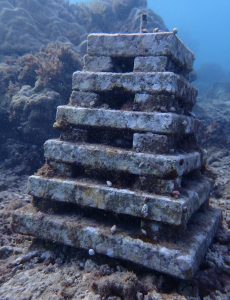
Unveiling Coral Reef Biodiversity: Insights from ARMS Monitoring Structures
An ARM teeming with new coral recruits and a diversity of marine life, highlighting reef recovery and biodiversity Understanding Coral Reef Biodiversity Most new PhDs in the natural sciences move
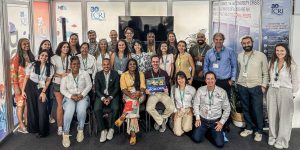
7 Key Takeaways from COP16: Confronting Coral Reef Challenges in a Changing Climate
United #ForCoral: Experts, advocates, and leaders from across the globe join forces at COP16 for the #ForCoral conference, hosted by the International Coral Reef Initiative. Together, they’re driving urgent action




